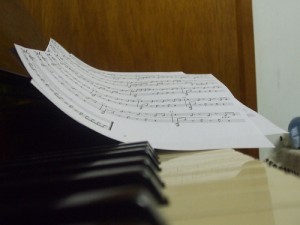A couple of weeks ago I shared some of my tips to help students who have trouble reading notes on the staff. As I wrote the post, I had so much to share that I decided to divide it up into two separate articles. Before I share my remaining recommendations, I think it’s important for me to explain just why it’s so important to be able to read notes. Understanding this brings to light the great importance of mastering this often difficult skill.
To me, note reading provides musical freedom. If a student can’t read notes or can only do so poorly, they are reliant on their teacher to help them learn pieces. Learning a piece when you have subpar note reading skills can take forever. Sometimes, as I’ll discuss below, students will just memorize a piece. Unfortunately the moment they stop practicing it regularly, they’ll lose it. On the other hand, if you can read notes, you can learn new music yourself. You can open up music that’s at your level and learn a piece on your own. It’s so incredibly rewarding to do this. I love sitting down at my piano and playing for the sheer joy of playing. I can’t tell you how much happiness this has given me in my life! If I couldn’t read notes well, this wouldn’t be even remotely possible.
Now that I’ve answered that important question, onto my remaining recommendations. In case you missed the first two, click here.
3. Notespeller
This is a type of theory book that focuses only on note reading. I prefer this notespeller book. The exercises are fun and the pages are filled with bright pictures that kids like. Students can work on a page with you in their lesson or on their own between lessons. Most students really look forward to working on pages in this book.
4. Read the music
This seems like a total no-brainer. However, so many students have an amazing memory. After playing through a section or a short piece a couple of time, they have it memorized. Instead of reading the notes as they continue to practice, they play from memory. Instead of reinforcing their note reading skills, they hinder them. While memorizing makes it easier in the short term, it does not help in the long term.
I do a couple of things to make sure my students are reading their notes rather than memorizing:
- Have them say their note names out loud
I’ll have them do this without playing (easier) or while they play (harder for most kids). Sometimes we’ll alternate– I’ll say a note name, they’ll tell me the next note name. That makes it easier too.
- Cover up their hands
Most students don’t like this tactic, so I usually don’t resort to it unless necessary. I’ll take my student’s opened book and place it over their hands while they play. This forces them to look at the music rather than just their fingers. So many students look at their fingers too much compared to looking at the music. This provides a real challenge, but it works very very well.
Finally I want to mention the importance of parental involvement in note reading and in music lessons in general. I talk about it a lot, but the students whose parents are more involved in their lessons, do so much better with us. I encourage you to help your children with note reading. Even if you don’t read music yourself, you hold up the flashcards for your child or sit with them while they work on their notespeller. You’ll help them master this difficult skill and will spend precious time with them in the process.
Thanks for reading today’s article! Leave a comment below and tell me which of my suggestions have worked the best for your child or if there’s anything additional you’d like to recommend to our readers. If you want to receive other helpful articles like this in your in-box, subscribe to our newsletter list. Also, please “like us” on Facebook. Have a wonderful day!
Sincerely,
Cassie

{ 2 comments… read them below or add one }
I give little kids a giant sheet of paper and colored markers.Have them draw the staff, then draw an animal next to each line (elephant, giraffe, whatever). They love to draw and it’s a fun ice breaker for a first lesson.
Thanks Cordi for sharing what you do with your students. This is a great idea!